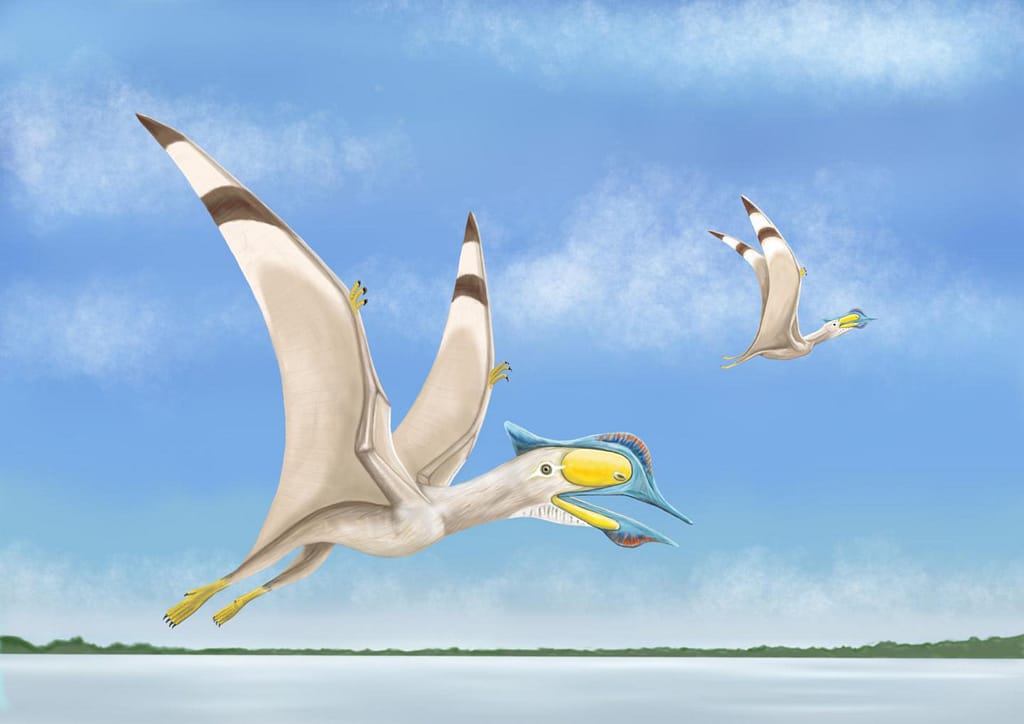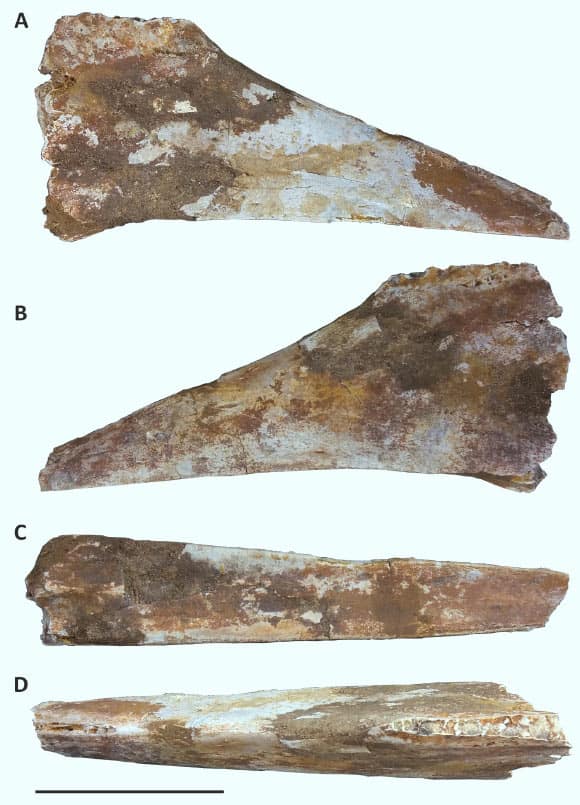
An artist’s impression of Afrotapejara zouhrii. Image credit: Megan Jacobs, Baylor University.
Afrotapejara zouhrii, an ancient flying reptile, inhabited the Earth approximately 100 million years ago during the Cretaceous period.
Belonging to the Tapejaridae group, Afrotapejara was one of the small to medium-sized pterosaurs, with impressive wingspans that could reach up to 4 meters.
Typical of tapejarid pterosaurs, Afrotapejara possessed a prominent crest that extended from the front of its skull, giving it a distinctive appearance.
While tapejarids are well-documented in regions like Brazil, China, and Europe, the discovery of Afrotapejara marks the first confirmed occurrence of Tapejaridae in Africa.
The fossilized remains of Afrotapejara zouhrii were obtained by a commercial fossil trader based in Erfoud, a town that sources fossils from various locations in the Tafilalt region of southern Morocco.
The specimen, a fragment of the jaw, was collected from a series of small excavations in the Kem Kem beds of the Cretaceous period, near a plateau known as Ikhf N' Taqmout (Takmout).
Co-author Roy Smith, a Ph.D. student in the School of the Environment, Geography and Geological Sciences at the University of Portsmouth, expressed his excitement about being part of this remarkable discovery. He described working in the Sahara as a life-changing experience, with the identification of a new pterosaur species being the cherry on top.
A partial rostrum of Afrotapejara zouhri from the Kem Kem beds of Ikhf N' Taqmout, Errachidia Province, southern Morocco, was examined in detail. The provided images show the right and left lateral views, the occlusal view, and the dorsal view of the specimen, with a scale bar of 5 cm.
Professor David Martill, a paleontologist at the University of Portsmouth, commented on the significance of the Moroccan material, emphasizing that there are still many undiscovered paleontological treasures in North Africa. Even fragmentary fossils, such as the jaw piece of this new pterosaur, provide valuable insights into the past biodiversity.
The findings of this remarkable discovery are published in the journal Cretaceous Research.




